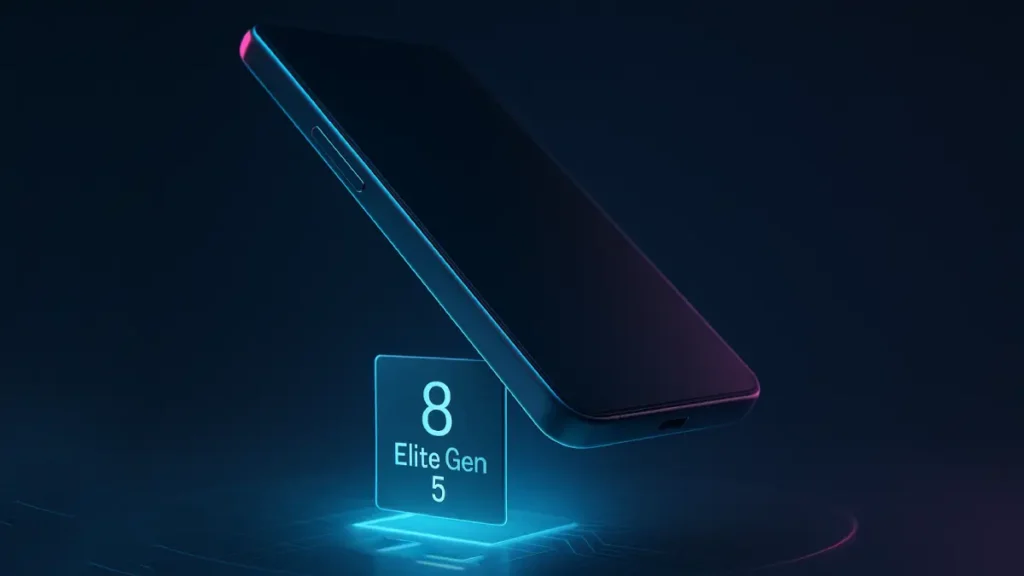Qualcomm’s next flagship SoC arrives under the mouthful “Snapdragon 8 Elite Gen 5,” a hybrid label that fuses a halo badge with a generational marker. The move is meant to signal a premium leap while keeping the 8‑series lineage intact. The real question isn’t whether the name is bold—it’s whether it makes decisions easier for shoppers and simpler for OEM messaging, especially in a year when Samsung’s Galaxy S26 lineup is juggling multiple silicon identities.

Why this name, and why now?
Qualcomm has been converging around “Gen” numbering to simplify its portfolio since 8 Gen 1, while “Elite” functions as a halo tier that conveys a year’s biggest architectural stride. Combining both suggests continuity plus prestige in one stroke. It also conveniently avoids a “Gen 4” label in markets where that number carries poor connotations, while letting marketing lean into a cleaner “5” story.
The Galaxy S26 wrinkle: clarity or more complexity?
Samsung’s cadence likely includes a higher-binned “for Galaxy” flavor alongside regional Exynos returns, which means shoppers will face at least three silicon tags inside one family: Elite Gen 5 standard, Elite Gen 5 for Galaxy, and Exynos 2600. Enthusiasts can parse this; mainstream buyers will mostly hear “some S26s are different,” which forces Samsung to spend precious launch time translating suffixes instead of showcasing benefits.
Who actually benefits?
- Qualcomm: Gains a stronger halo identity that stands toe-to-toe with rival flagships and anchors premium pricing narratives across partners.
- OEMs: Get a headline-ready badge—“Elite Gen 5”—that can power slides, carrier sell-in, and retail signage without inventing their own silicon language.
- Consumers: Face a steeper decoding task separating generation, halo tier, and OEM-specific bins from tangible outcomes like better photos, smoother games, or longer battery life.
The case for simplification
A cleaner matrix could separate class from chronology: keep “Snapdragon 8 Gen 5” for the mainline flagship and “Snapdragon 8 Elite” as a timeless halo, updated yearly without a gen tag. That model preserves clarity—one label says “how new,” the other says “how high-end”—instead of stacking both into one SKU name that needs an explainer every fall.
Xiaomi-first signal, Samsung echo
Expect a China-first debut via Xiaomi’s numbered flagship before broader global rollout. Samsung then amplifies the halo with a “for Galaxy” bin in select models and regions. Strategically, this maximizes early visibility and sustained momentum, but it also magnifies regional variance that reviewers and retail reps will need to unpack repeatedly.
What the name hides—and what to watch
- CPU: How Oryon cores schedule under sustained loads and mixed workloads matters more than peak clocks. Thermal stability over 15–30 minutes will tell the real story.
- GPU: Gains in ray tracing, driver maturity, and frame pacing trump synthetic peak scores; watch consistent performance at target resolutions.
- NPU/AI: On-device capabilities should be expressed in user-facing metrics—tokens per second for LLMs, diffusion image times, multimodal camera features—not just TOPS.
- ISP pipelines: Real improvements show up as faster multi-frame capture, better low-light fusion, and less shutter lag; look for side-by-side camera proofs, not just spec sheets.
- Efficiency: Process node, packaging, and binning should translate to cooler chassis and longer screen-on time; battery life in mixed 5G + camera + maps is the litmus test.
The contrarian take: branding debt is real
By mixing class (“Elite”) with chronology (“Gen 5”), Qualcomm risks annual “explanation debt” just as rivals stick to simpler ladders like single-number families. The win condition is cultural shorthand—“Elite Gen 5 = the best 8‑series this year”—that sticks without slides. The failure mode is buyers tuning out suffixes and relying entirely on trusted reviews and carrier scripts, eroding the halo’s intent.
What if Qualcomm is right?
If performance, camera outcomes, and AI features deliver obvious day‑one benefits, the market will absorb the label quickly and “Elite Gen 5” will feel earned. A one-two of Xiaomi’s early showcase and Samsung’s “for Galaxy” push could normalize the name in a single cycle—especially if real-world battery and thermals visibly improve.
Bottom line
Snapdragon 8 Elite Gen 5 is a bold branding swing that could either compress the silicon story into a memorable shorthand or create yearly translation overhead. Its success won’t hinge on the number it chose to skip but on whether devices show unmistakable wins in photos, gameplay, AI features, and battery life—and whether OEMs keep the message simple at retail.




